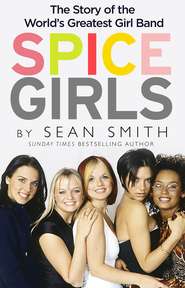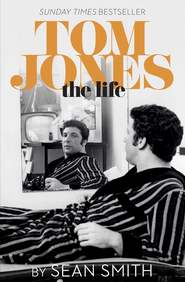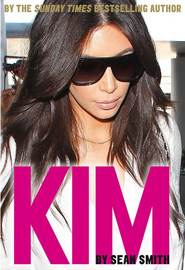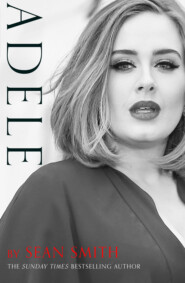По всем вопросам обращайтесь на: info@litportal.ru
(©) 2003-2024.
✖
Ed Sheeran
Настройки чтения
Размер шрифта
Высота строк
Поля
While boxing might seem an unlikely bedfellow for the artistic world so enjoyed by his son John, Bill had a passion for collecting art connected to the sport. When the family moved to the quieter waters of Chislehurst in Kent, he filled the house with paintings, drawings, ceramics, sculpture and silver.
In his affectionate tribute to his father after his death at eighty-six in December 2013, John recalled how, in later years, Bill had given away most of his collection to friends. Touchingly, he gave the World Light Heavyweight Championship belt and trophy, won by Freddie Mills, back to the boxer’s widow, Chrissie.
Two years before Ed was born, his Irish grandparents retired to the same farmhouse where Anne had been born in County Wexford. In ‘Nancy Mulligan’, they have twenty-two grandchildren. By the time of Bill’s death that number had risen to twenty-three and there were also four great-grandchildren, a number that Ed has often said he is looking forward to increasing.
Bill loved to show the finer points of boxing to the younger members of the family. Ed’s cousin Jethro Sheeran, better known as the recording artist Alonestar, became a huge fan of the sport, especially after Bill gave him a video one Christmas of Sugar Ray Leonard versus Marvin Hagler, one of the most celebrated fights of all time. From an early age he would be down at Bill’s gym practising Sugar Ray’s moves. Jethro, like many of the younger generation, idolised his grandfather: ‘He always instilled into us to be humble and respect others.’
It’s easy to imagine Bill teaching Ed, who was quite a small boy, self-defence. Anne proudly remembers that her grandson was ‘lovely as a kid’. Ed revelled in his visits to the farm in the summer holidays when he would camp with his cousins in the big barn beside the house. He forged a lifetime love of Ireland, its people and its traditional music, and still visits his grandmother whenever he can.
Boxing proved to be the focus of the 2017 video for ‘Shape of You’, Ed’s biggest-selling single to date. He displayed some promising moves as an aspiring boxer in love with a female fighter in his gym. By then his grandfather had died, after a battle with Alzheimer’s disease but, in the poignant ‘Afire Love’, Ed recalls his dad telling him as a boy that it wasn’t his grandfather’s fault he no longer recognised his grandson’s face.
Bill was president of the Gorey Boxing Club and members formed a guard of honour for his funeral, paying a personal tribute to him: ‘In Bill Sheeran we have lost a mentor, inspiration and role model whose generosity and kindness has helped thousands of young men and women.’ He was buried with a pair of boxing gloves in his coffin. In his obituary for Bill, published in the Guy’s Hospital journal, the GKT Gazette, John Sheeran recalled his father’s car-bumper sticker, which robustly declared, ‘Pugilism not vandalism’.
Ed fell in love with the Irish music he heard on his childhood holidays. He adored the traditional Irish folk groups Planxty and The Chieftains, but most of all he loved an artist who, ironically, he had first heard his dad play on one of the long drives south from Yorkshire. Van Morrison was the first of three major musical influences on Ed Sheeran. He listened to his classic albums Moondance and Irish Heartbeat and was hooked.
Moondance, which was released in 1970, is often hailed as a masterpiece of modern music and remains one of the best-loved albums of all time. Perhaps more interesting with regard to Ed’s musical development was Irish Heartbeat, a collaboration between Van and The Chieftains.
Van, who was born in Belfast, had been an Irish icon for more than thirty years since he first came to prominence in the group Them, with whom he recorded classics such as ‘Here Comes the Night’ and, more significantly, ‘Gloria’. His most famous song, ‘Brown Eyed Girl’ was his first solo single in 1967. He became a master of soulful blues, releasing a string of acclaimed albums.
While he had never deserted his Irish background in his songs, Irish Heartbeat was a return to more traditional music – albeit overlaid with Van’s inimitable vocal style. Three tracks in particular resonated with young Ed, who was seven when the album was released in 1998. He loved the folk songs ‘Carrickfergus’, ‘On Raglan Road’ and, most of all, the elegiac title track. Ed has yet to release these songs himself but acknowledged, ‘Van Morrison is a key influence in the music that I make.’ He paid homage to Carrickfergus by including a reference to it in ‘Galway Girl’ as well as mentioning ‘Van the Man’ in his hit, ‘Shape of You’.
And if you had been lucky enough to be drinking in the back room of the Cobden Arms in Mornington Crescent in 2010, you might have heard nineteen-year-old Ed enjoying a pint with musician friends and singing these favourites at the top of his voice. That, though, was many years in the future and the last thing on the mind of a quiet schoolboy still trying to conquer his stammer. It was time to do something about that.
3
The Eminem Remedy (#ulink_77248c4f-1a6f-5ef5-8db5-30bf660f90b5)
Ed was trying all sorts of things to help with his stutter. He had coaching sessions with a speech therapist and took a variety of different homeopathic remedies but nothing seemed to make much difference. He didn’t have the worst stammer in the world but it did become more pronounced when he was excited and rushing to search for the right word. Interestingly, it didn’t affect him when he was singing in the choir or in his dad’s car. But conversation remained difficult.
When Ed was nine, Eminem was one of the biggest acts in the charts. Rap music was selling millions of records and Eminem was at the forefront of its popularity. When he released The Marshall Mathers LP – his real name – in May 2010, it became the fastest-selling album of all time in the US. More importantly, perhaps, his work was well received by the critics, who compared his autobiographical songs to those of Bob Dylan.
In Framlingham, this had passed John Sheeran by as he continued to play his old favourites. His brother, Ed’s uncle Jim, was more enlightened about contemporary music and told him that Eminem was the next Dylan. John was always receptive to new ideas across the artistic spectrum so he went ahead and bought the album for his younger son even though he had never listened to it and had no idea that it contained controversial and sexually explicit lyrics. Ed would later describe rap music as storytelling.
Ed had a great capacity to absorb things – he had the musical equivalent of a photographic memory. He set about learning the songs on the album, including all the bad language: ‘I learned every word of it, back to front, by the age of ten.’ That would invariably be the case with music he liked. He had an enviable talent for working out how to play songs just by listening to them.
He discovered that rap was the best therapy for his speech. In 2015, while receiving an award at the New York benefit gala for the American Institute for Stuttering, Ed spoke about being indebted to Eminem: ‘He raps very fast and very melodically, and very percussively, and it helped me get rid of the stutter.’
Ed’s remedy was not unique: many young people used singing as the best form of therapy – although not all of them chose The Marshall Mathers LP. Ed’s favourite track from it, and the one that had most influence on him, was the UK number one ‘Stan’. The song combined two elements that are very important in Ed’s music: a catchy melody line, which was sung by Dido, and a poetic, rhythmic rap by a master of the craft. Ed included the song in his Desert Island Discs and a separate list of his all-time favourites, which he gave to Rolling Stone magazine.
The song, which told of an obsessive fan’s suicide, gradually builds into a rage, then takes it back a step for the Dido chorus, which was basically a sample from her hit ‘Thank You’. Ed enjoyed its contrast of different emotions.
Even when so young, Ed seemed able to appreciate different musical genres. He still loved Van Morrison but now he was discovering new artists for himself. He noticed that Dr Dre, the producer of The Marshall Mathers LP, had a new album coming out entitled 2001, much of which featured Eminem. Ed, who earned pocket money from odd jobs, including washing cars, made sure he bought it, then widened his collection to include Jay-Z, Snoop Dogg, Tupac, who had been killed in a drive-by shooting in 1996, and the Notorious B.I.G., who had been shot dead in a similar fashion a year later. Hip-hop music seemed wild and exciting to a boy soon to start high school in a small Suffolk town.
Ed was fortunate in that his older cousin Jethro had similar tastes, which meant there was someone to appreciate his new music on family holidays. Jethro, who was brought up in Bristol, had been inspired to become a rap artist when he heard Tupac’s hit ‘Dear Mama’, a tribute to his mother whom he loved dearly despite her addiction to crack cocaine. Jethro was already fifteen when Ed first discovered hip hop but over the years the two worked closely together on each other’s songs, particularly when Ed was still learning his craft in Framlingham.
Tupac’s stories were grittier than those of Hollywood A-lister and rapper Will Smith, but Ed had become a big fan of the latter, too, when he discovered that The Fresh Prince of Bel-Air was on TV after The Simpsons on a Sunday night. He lost little time in learning Will’s theme-tune rap. He loved it and is liable to drop a verse randomly into a song at one of his concerts.
Curing his stutter undoubtedly enhanced Ed’s confidence but he still had his problem eardrum. That was finally operated on when he was eleven, which was obviously a relief, although he would continue to have problems with it in the coming years.
While Eminem undoubtedly influenced Ed’s choice of more contemporary music, his love affair with the guitar was triggered by an old master on TV. He watched Eric Clapton performing ‘Layla’ at Party at the Palace, the June 2002 concert to celebrate the Queen’s Golden Jubilee in the gardens of Buckingham Palace.
The concert became famous for Brian May playing ‘God Save the Queen’ on the palace roof, but Eric was the highlight for Ed. He had slipped unassumingly onstage after an unlikely collection of Emma Bunton, Atomic Kitten and Cliff Richard had joined Brian Wilson to perform ‘Good Vibrations’. He commanded the space, dressed immaculately in an expensive dark suit and playing a guitar that was itself a work of art. The renowned New York graffiti artist John ‘Crash’ Matos had painted one of Eric’s signature Stratocasters and presented it to him as a gift. Eric was delighted and commissioned others from the artist, who had made his name spray-painting trains across the city. The guitars became known as ‘Crashocasters’ and Eric played the original on a world tour. The big video screens to the side of the stage zoomed in on his hands as they moved nimbly around the musical work of art.
‘Layla’ is an iconic rock anthem that Eric has played thousands of times since 1970, when the track first featured on an album by his band Derek and the Dominos. An intensely passionate composition about love, the song changes halfway through into a much more melodic number that features a long, melancholic guitar solo.
Ed was spellbound by the whole magnificent performance – the majestic riff, the guitar and the sheer presence of Eric. ‘I was like “Wow. That was so cool. I want to play that.”’ Even at eleven, once Ed had decided to do something, he did it. Fortunately his parents would invariably back him up.
Ed was in danger of always being half a step behind his elder brother, Matthew, who played the violin and continued to progress as a young classical musician. Ed had started taking cello lessons at school and his parents initially wanted him to tread a traditional musical progression of passing exams. Ed went along with it, but even at eleven he saw a different future for himself. He explained in the book AVisual Journey that classical music didn’t inspire, excite or do anything for him whatsoever.
Instead, two days after watching Clapton, he walked into a pawnbroker’s in Ipswich with £30 in his pocket and came out with a black Stratocaster copy. From that moment, Ed spent the majority of his leisure time shut away in his bedroom playing guitar. For the first few weeks, it was just ‘Layla’. One can only imagine what the rest of the Sheeran household thought, hearing its famous riff played badly again and again … and again.
His parents decided he needed proper lessons and found a guitar teacher, Graham Littlejohn, who played with a local band and taught Ed to widen his repertoire. Under Graham’s guidance, he learned to play rock classics, including ‘A Million Miles Away’, a thrilling piece by the celebrated Irish guitarist Rory Gallagher.
Just a month after seeing Eric Clapton on TV, Ed went to his first live concert. He persuaded his dad to take him to see the enduring American punk band Green Day when they brought their Pop Disaster tour to Wembley Arena in July 2002. He was eleven, and due to start high school in a couple of months. It was the first of many occasions when John Sheeran would accompany his son – in fact, he would be with him on every step of his musical journey. Many of Ed’s friends were fans of the band, who were one of the biggest-selling acts in the world, and going along to see them in London earned him plenty of bragging rights.
Ed was pretty much a guitar geek by the time he started at Thomas Mills High School in September 2002, but not in an irritating way. He wasn’t a loner and found it easier to make friends than he had in the past, especially if they were keen on music, too. Many of the mates he already had, including James Mee, moved to Framlingham College and inevitably they lost touch. James, who went on to become head boy, was more academically minded than Ed and achieved nine A*s at GCSE.
Thomas Mills was in the town, meaning Ed could walk to school – which was a bonus. His first form teacher was Georgie Ross, a charismatic young woman who was also in charge of drama. She noticed Ed among the new boys and girls right from the start, not just because of his striking ginger hair and glasses but also because he had brought his guitar with him on the first day. She recalls, ‘It was his passion. That was the first thing I noticed about him. We had a getting-to-know-you exercise and he talked about his guitar. He was very funny and endearing, a jovial sort of cheeky chappie.’
Ed has never explained why, having been to fee-paying private schools, he moved on to attend a state secondary. He has intimated that he found Brandeston Hall sporty and competitive, adding, ‘The other kids had a lot of money. I didn’t enjoy it.’ The huge fees at Framlingham College may also have had something to do with it. His parents’ business was successful but was at the mercy of supply and demand, and there were no guarantees that they could afford the five-figure sum needed to keep two boys at public school for the next five years.
Ed has hinted that he was bullied during his school years but he has never been specific about when and where. He accepted that he was a ‘weird-looking kid’ and that everyone suffers ‘a bit of bullying at school’. A particularly unpleasant boy threw a milkshake over him from a car while he waited at the bus stop. Such treatment motivated Ed to beat them at life.
Thomas Mills had a growing reputation as a school that encouraged children to make the most of their talents, particularly in the arts. The school dates back to the eighteenth century but was established as a comprehensive in 1979 by the merger of the old Mills Grammar and Framlingham Modern schools. Matthew was already being noticed by the time his younger brother joined him. He had been praised for his crystal-clear singing of ‘Pie Jesu’ at an end-of-term prizegiving. Both boys were fortunate that they arrived at the school when it was going through a golden period under the then headmaster David Floyd. He is one of the unsung heroes of the Ed Sheeran story in that he gave Ed and others the breathing space to develop their talents.
Georgie Ross observes, ‘There was a sense of pride about being at the school. I think the majority of the children knew they were sort of lucky to be at this school. David had a real vision of what he wanted the school to be – an outstanding school. And he managed to convince us all to go on this journey with him.’ Ofsted agreed, declaring, ‘This is a good school where pupils make good progress and reach high standards in an atmosphere of civilised collaboration.’
Ed seemed equally at ease with boys and girls. His parents’ close friends, Dan Woodside and Wendy Baker, had two daughters. Lauren and Martha were of similar ages to the Sheeran boys, and the families spent many sociable Sundays together. Dan was a decorative artist and Wendy an artist and art teacher, so they shared John and Imogen’s creative tastes. Dan had worked on major restoration projects, including the ceiling at the entrance to the National Gallery, London, and the gilding of the Crimson Drawing Room at Windsor Castle.
Dan and Wendy had moved to the town a couple of years after their like-minded friends and turned their new home in Market Square into the Dancing Goat Café, which soon became a focal point for wiling away sunny afternoons. Ed and his new friends from Thomas Mills would gravitate there after school. He was always calling round on his own as well, to see if Lauren was coming out. In recognition of their families’ long-standing friendship, Ed would give Dan and Wendy a gold record of his first album +, which now hangs proudly on the café wall.
Ed had a close circle of friends but was never constrained by Framlingham. The regular trips to Ireland and London, combined with his mum and dad’s sociability, had broadened his horizons. John continued to extend his son’s musical education by taking him to concerts and he managed to get tickets for a great night in April 2003, when Ed was twelve: they saw Paul McCartney in concert at Earl’s Court. The most famous name in pop played a mammoth set of thirty-seven songs that spanned his entire career, from the heyday of The Beatles, to Wings and his solo material. David Lister, writing in the Independent, observed that Paul dished up a generous two-and-a-half-hour set of classics with ‘such panache and emotion that it made the nerves tingle’. It was a tour de force and Ed decided that he preferred it to the Green Day gig.
Friends became used to Ed taking a guitar everywhere. By this time, he had a Faith, a decent-enough learning instrument. It was like a young child’s teddy bear: he was rarely seen without it. He showed precocious bravery when he took to the stage and played ‘Layla’ at his school’s spring charity concert. Inside, he wasn’t feeling too confident but he blossomed in front of an audience of several hundred people in the school hall. By then he had mastered the song, so playing it was second nature and, to his relief, he was warmly applauded: ‘It was fun. No one could have said a bad word, because I was so young and enthusiastic.’
At the end of his first summer term, Ed’s year went to a resort in Holland, which was very exciting as they would all be away from home for a week. John and Imogen were keen for their sons to have adventures that would take them away from the narrow confines of Framlingham. Naturally, Ed took his acoustic guitar with him. On the coach he was determined to give everyone a song. His art teacher, Nicky Sholl, recalls that they asked for volunteers to go up and do a turn: ‘Of course Ed went up and sang a song and then went back to his seat. And then he came back and sang one again. And everyone was like “Get him off the microphone!” It was very funny.’
He was also one of 140 pupils who sat around on the beach and chilled out at the end of a sightseeing day as the sun went down. Georgie Ross has never forgotten it: ‘Ed just got up with his guitar and got them all singing along with him. He was already a real hit with this crowd of young people. He sang “Stan”.’
It was a perfect end to the day, although Ed was about to discover that his musical progress would have its downs as well as ups.
4
Spinning Man (#ulink_a7a69191-76f2-5b32-971e-04cb9f4b49c2)
Ed was very upset. Without warning, his first guitar teacher had decided that teaching wasn’t for him. Playing the guitar was crucially important to Ed and this seemed like a hammer blow to the twelve-year-old boy. He took it very badly. His mother recognised that she needed to act quickly to rekindle his enthusiasm or Ed would go back into his shell. She started asking around to see if someone else in Framlingham might take on her son, and discovered that two neighbours in the street were both using the same virtuoso guitarist to teach their children. They spoke very highly of jazz musician Keith Krykant, whom they’d found through an ad in a local community paper, and thought he would be ideal for Ed.
Keith, who was in his early fifties, had only moved recently to the town but, coincidentally, he had already heard of Ed. He had started teaching Richard Croney, one of the children who lived across the road from the Sheerans. One afternoon Keith was walking home with Richard when they saw a ginger-haired boy on the other side of the street. Richard piped up, ‘That’s Edward Sheeran,’ and told Keith that Ed played concerts in the town and was already quite well known locally.










